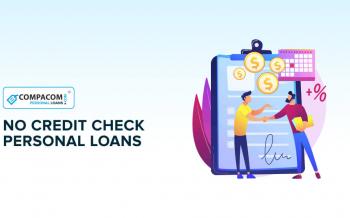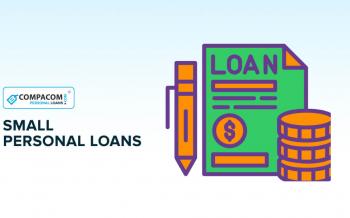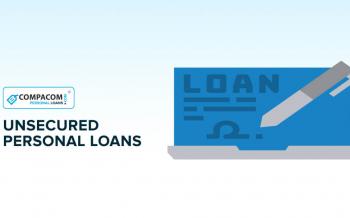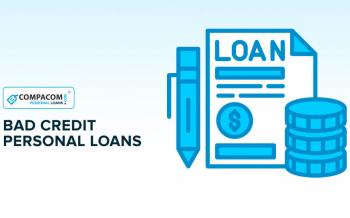On the financial market, we can use many financial products, including a closed-end loan or an open-end loan. A closed-end loan is any loan that is issued for a certain amount and repaid according to a clear schedule, whether it is a payday loan or personal loan. An open-end loan is a so-called line of credit, which can be secured or unsecured. An open end loan that combines the features of a credit card and an online loan is gaining more and more popularity.
What Is An Open End Loan?
Loan companies offer not only online payday loans, online installment loans, or loans for companies, but also openened loans that operate on a similar principle to credit lines that banks offer. However, the difference is that the limit of an open-ended loan is lower and it is not assigned to the borrower's current account.
The loan line itself is a financial product that works similarly to an overdraft or credit card, but with the exception that it is provided by loan companies, not banks. Open end credit is the loan limit granted under the agreement. You can use the funds for any purpose you choose. You have constant access to them, 24/7. Remember that each repayment reduces your debt. At the same time, by paying back at least part of the loan, you can use this amount again.
Let's check an open-end credit example. You have received an open end loan of $ 3,000, and you have withdrawn $ 500 from it so far. If you return this amount with interest after a month, you can use the $ 3,000 granted again.
How Does The Open End Loan Launch Look Like?
In order to launch an open end loan, you just need to register on the website of the selected loan company, then submit the appropriate application. The whole process looks like when granting payday loans, because you just need to choose the amount for which we would like to receive a loan, as well as the repayment date. In the next step, the company's employees carefully analyze the application, also checking the borrower’s proof of income. When everything goes well, the company then contacts the borrower, informing him of the final amount of the loan granted.
How Does The Money Withdrawal Process Work?
The loan payout process looks like this: log in to your account, then select the amount you would like to withdraw. When we confirm the amount of withdrawn amount, it is transferred to our account. However, some companies may have different procedures. It may happen that the amount of the first payment cannot be greater than half of the amount requested for the loan line. Therefore, if we do not have urgent expenses that will require the use of the entire amount granted, this solution will be very good for us. One of the most important advantages of the open end loan is the fact that we can use the withdrawal of money at any time and for the amount we need at the moment. Thanks to this, we can easily repay our debt on an ongoing basis, thus reducing the amount of commission charged. Another very important advantage of this solution is the ability to change the repayment date of an open-end loan. It can be both lengthened and shortened according to your needs. It is worth emphasizing the fact that every month we are obliged to pay the minimum amounts, which are determined on the basis of the previously signed contract.
Open-End Loan - How To Apply?
Open end loan application is very simple and consists of several standard stages. The first is usually registration on the website of the selected loan company and submitting an application. It should include, among others: such data as: series and number of the ID card, education, marital status, address of residence and registered address, mobile phone number and e-mail address, bank account number, source and amount of income, monthly expenses (including those related to the repayment of other liabilities).
Also, select the amount and period in which you want to use the limit. In the next stage, the lender will analyze your application. It will verify your identity and creditworthiness. If the decision is positive, you can accept the terms of the contract. Then you also have the right to order the first payment under the loan line. Log in to your account and select the appropriate amount.
The money can then be used at any time convenient for you (24 hours a day, 7 days a week). The loan line is for people who meet the following requirements:
- correctly complete the loan application;
- are not less than 18 and not more than 75 years old;
- have a valid ID card, U.S. citizenship and live in the U.S.;
- they can provide a proof of income for at least 3 months.
Closed-End Loan Or An Open-End Loan – Which Is More Profitable?
Knowing several features of these financial products will certainly help you choose the loan that will be best suited to your needs. So, if you already know in advance that you need more flexible loan terms, because you may, for example, not be able to repay a closed-end loan online, it is better to use an open-end loan. In the case of a closed-end loan such as payday loan, the borrower usually has 30 days to settle it and if he does not pay back the money within the agreed period, he will be charged with penalty interest. Of course, it can then extend the loan repayment period or refinance the loan, but this will involve much higher costs.
An open end loan can be an interesting alternative to a closed end loan if you want to get a higher amount, which you will be able to freely use. An open end loan can be used for a longer period of up to 60 months, and the previously repaid funds can be used again. Also importantly, its costs apply only to the amounts used by you, and not, as in the case of online closed-end loans, interest and non-interest costs, regardless of the amount of the liability.
Before you decide on an open end loan, be sure to also pay attention to its disadvantages. Because its activation for a high amount can lead to uncontrolled debt. Therefore, carefully analyze whether you will be able to pay it back with interest. Any delay in repayment of an open end loan generates additional costs, for example in the form of reminder fees.








You are about to post a question on compacom.com:
Any comments or reviews made on this website are only individual opinions of the readers and followers of the website. The website and its authors team are not responsible, nor will be held liable, for anything anyone says or writes in the comments. Further, the author is not liable for its’ readers’ statements nor the laws which they may break in the USA or their state through their comments’ content, implication, and intent.